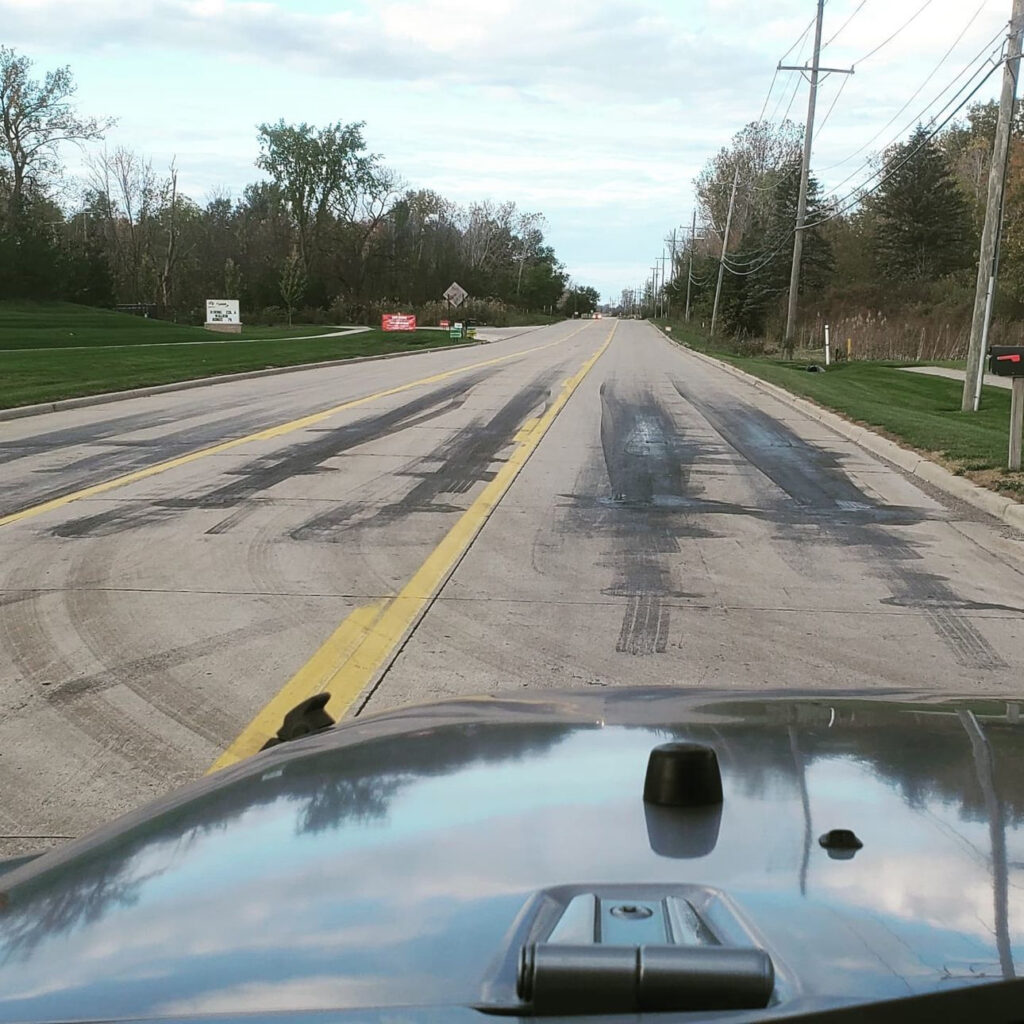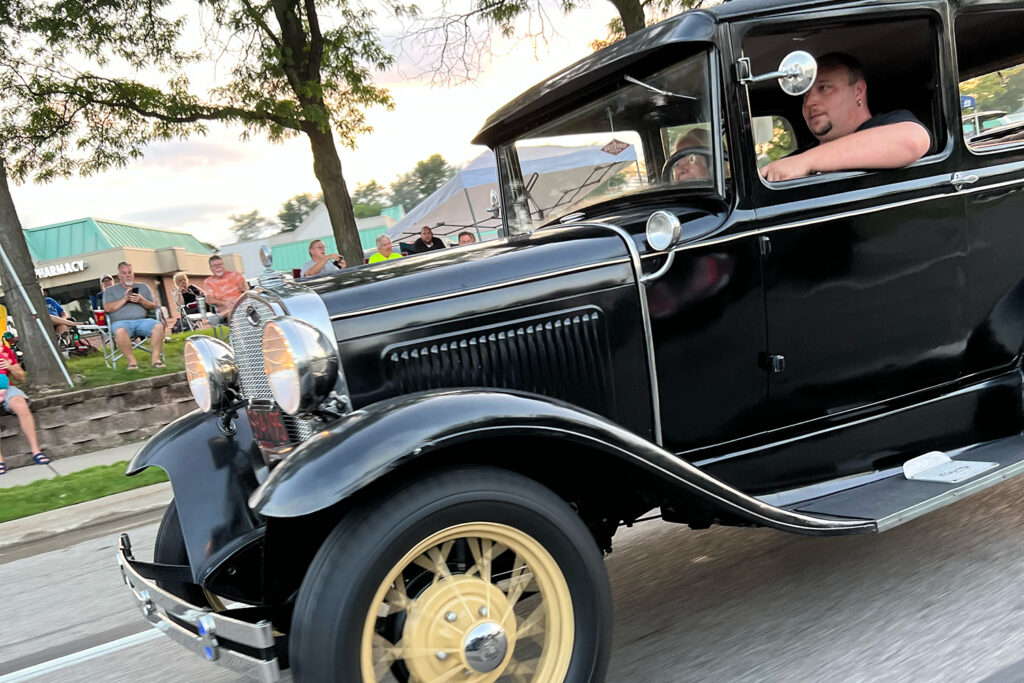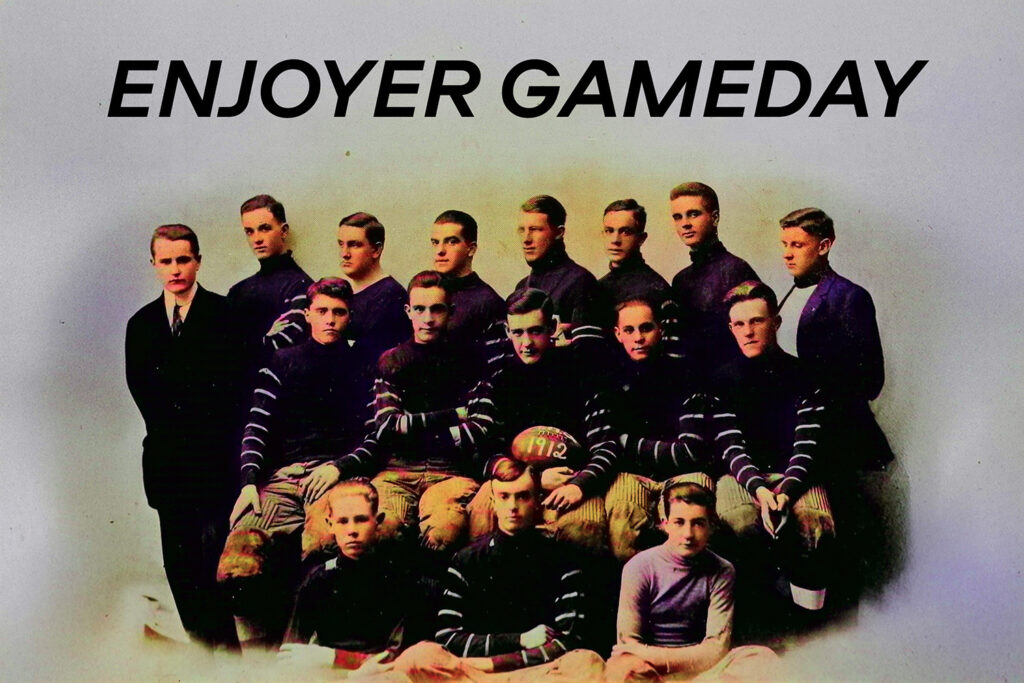Editor’s Note: The names of some individuals in this story have been changed.
Detroit — One of my clearest elementary school memories is of my family sitting in the bleachers at the Milan Dragway, waiting for my dad to take off down the track. Back then, he drove a red 1991 Mustang GT with about 700 horsepower. Now he drives a car twice as powerful.
My brother and I were trying to figure out why so many of the adults around us were eating jello, and my mom was trying to distract my younger sister from the wet T-shirt contest taking place nearby, when the race began. The light turned green, and my dad took off. Halfway down the track, going about 140 mph, the hood of his Mustang flew up. He had forgotten to secure it.
The Mustang’s parachute deployed, and he came to a safe stop. But my mom swore we were done with the track, the racing, the cars—all of it.
And yet the next year we were back, my brother and I armed with new knowledge about jello shots. This time, my dad won.
I thought about that story this weekend during the annual Dream Cruise, when thousands of car enthusiasts descended on Woodward Avenue for the largest single-day car event in the world. The point is to putz down Woodward, America’s first concrete highway, as the crowds ooh and aah. But when the sun sets and the crowds leave, the real fun begins.
Detroit’s speedsters don’t just race at tracks like Milan, where racing is regulated, legally sanctioned, and safer. For years, guys from all over Metro Detroit have also met up at set locations in empty neighborhoods and urban back roads to test their horsepower. Nowadays, these meetups are more sporadic and the locations always change, due in large part to a crackdown from local law enforcement. But the Dream Cruise is one of the few times per year when a street race is sure to happen.

For those unfamiliar with the sport, the cars racing down Detroit’s streets aren’t your typical Mustangs or Corvettes or Chargers. They are wicked fast, turbo-charged cars with upwards of 1,000 horsepower. That means they can get up to around 175 mph in 8 seconds.
The best comparison I have for how it feels to be in a car going that fast is Cedar Point’s Top Thrill Dragster. Your stomach gets left behind as you hang on for dear life and pray to God that the guy behind the wheel keeps the car straight.
My brother has inherited my dad’s love for speed, and he buys his cars accordingly. The best I got was a souped-up pair of racing tires that my dad put on the 2004 Toyota Camry I bought my freshman year of college. I probably looked like an idiot, but I didn’t care. I had to live up to the family name.
The cool factor of a flashy car attracts a lot of guys to racing, but the adrenaline and thrill of winning keeps them there.
Most of the time, they start on the streets—where the rules are determined by the guys racing, where smack talk is 80% of the fun, and where any car, regardless of speed, has a shot at winning.
Unlike the track, where the pavement is well-kept, the street itself could determine who wins. The right lane might have a crack or bump, while the left lane might be clear. Who gets the best lane is a key part of the negotiations that take place between drivers before every street race.
There are several other factors they debate as well. Are both cars rear-wheel drive or is one all-wheel drive? Who will be the flagger (the guy who stands in the center of the lanes to initiate the race)? Will he initiate the race by dropping an arm or turning on a flashlight?
What if one of the drivers jumps the start? Most of the time, the drivers will agree that if one of them jumps and the other stays put, the driver who jumped automatically loses. But if a driver jumps and the other car panics and takes off after him, then a chase means a race.
Oftentimes, a driver will jump if he believes the car he’s racing against is faster than his. The slower car knows his biggest advantage is to take an illegal head start and try to sucker his faster opponent into chasing after him. It takes serious discipline, especially with the adrenaline pumping, to stay put. If a car jumps and the other driver so much as lets his foot off the brake, that’s a chase.
Street racing doesn’t just require horsepower, though having more of it certainly helps. It also requires gamesmanship and strategy.
“The street is the great equalizer,” Jay, who’s been racing on the street and the tracks for years, told me. “Even the fastest guys lose, because it’s not always about who has the fastest car.”
But despite the thrill and accessibility the street offers, the sport has been losing steam over the past few years. Blame the cops. In fact, when I reached out to a few guys for this article, one thought I was an undercover cop myself.

The crackdown started back in 2019, when Detroit police created a new unit, the Drifting and Drag Racing Taskforce, to shut things down. Jay said he was out one night at one of the best racing spots when the cops rolled in with 14 tow trucks and started impounding cars. For weeks afterwards, he said, “You didn’t know whether you were agreeing to a race with another driver or an undercover cop. They had cops in Hellcats.”
Another racer, Mike, told me a buddy of his had his car impounded just for watching a street race. “He wasn’t even racing,” Mike said, “but the cops showed up to his house weeks later in plain clothes and impounded his car. It cost him more to get the car out than what the car was worth.”
Two of Mike’s other friends had their cars impounded after they posted a YouTube video of their race.
The cops have eased up quite a bit since then, according to Jay, but there’s still a massive risk. If your car is impounded, it could cost you thousands of dollars in fines and legal fees to get it back. And if you’re caught racing, at the very least, you can expect points on your license and a massive spike in your insurance premium. At worst, you’re facing possible jail time.
This is why a lot of guys prefer the track. But even the track has slowed down lately, Jay said. You might not have to worry about undercover cops at the drag strip, but guys do worry about their egos if they lose.
“If you took an ass whipping in the past, that was it,” Jay said. “Now there’s memes, banter, videos, social media—losing hurts a lot more than it used to.”
And then there’s the cost. Racing in general is hard on cars, and the price for repairs and upgrades keeps getting higher, and the wait times for those repairs keeps getting longer.
“Numbers are lower than they’ve ever been across the board, car counts are down. We’re definitely going through something,” Jay said. “When the economy goes down, racing is the first thing to go. People start selling their cars, people start downgrading, people don’t race.”
But events such as the Woodward Dream Cruise make it easy to see why so many guys pour so much time and money into their cars, and why they take the risk to race at all. Cruising in one of my dad’s cars, I feel like the coolest person on the road, especially since I know I could crush any one of the other guys on the road if it came down to it.
They probably all think the same thing. But they can say that to my tail lights.
Kaylee McGhee White is the Restoring America editor for the Washington Examiner, a Tony Blankley fellow for the Steamboat Institute, and a senior fellow for the Independent Women’s Forum. She grew up in Detroit and graduated from Hillsdale College. Follow her on X at @KayleeDMcGhee.



